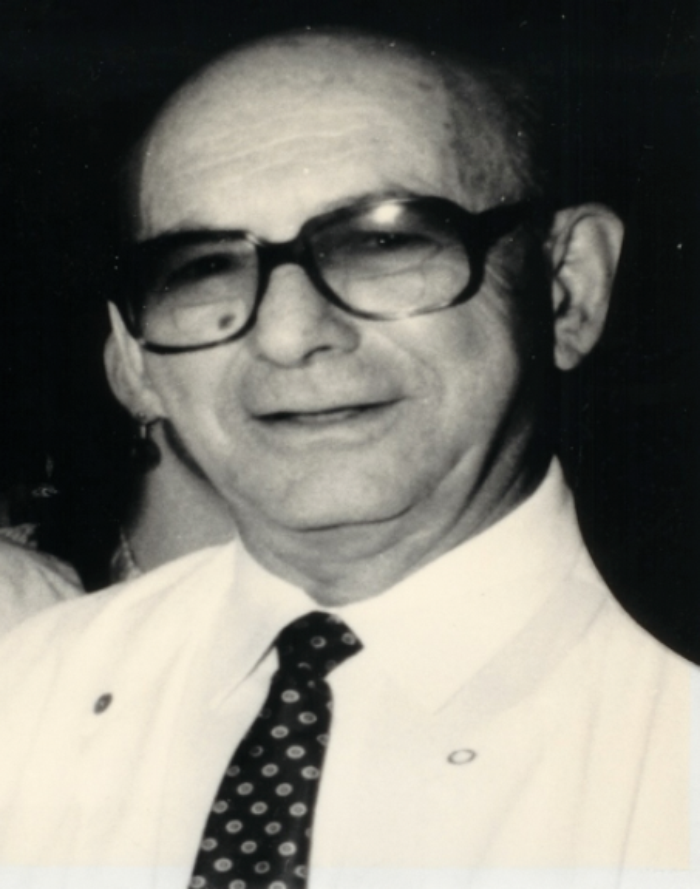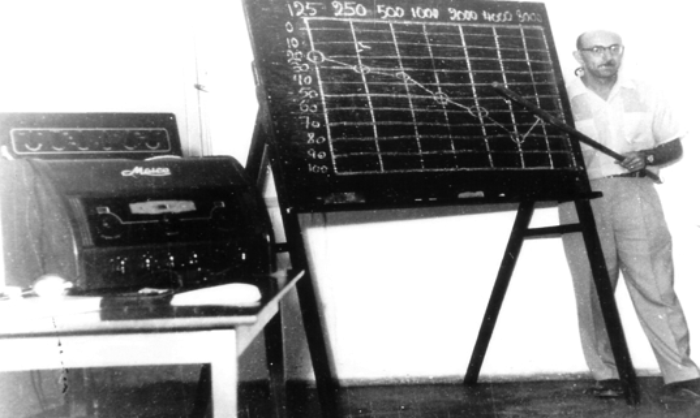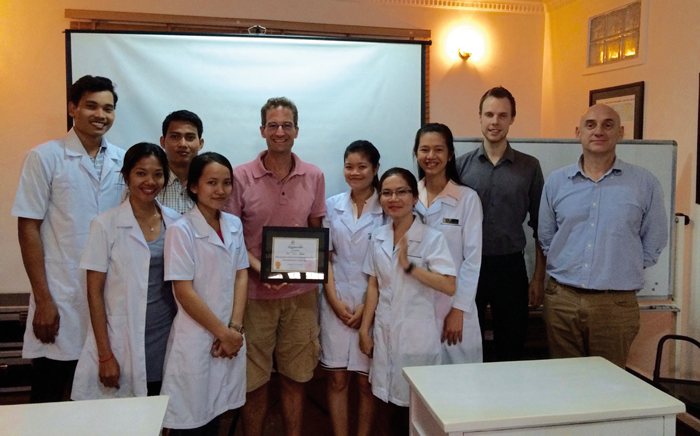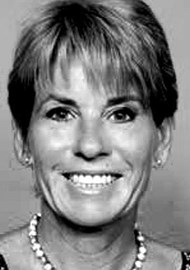Liat Kishon-Rabin provides an excellent summary of audiology training in Israel, encapsulating the development of audiology services in the country. Readers will be intrigued by the systematic approach taken to its development, and its pairing with speech and language pathology.
In Israel, academic and professional organisations have adopted a dual specialty model for the disciplines of hearing (audiology) and speech and language pathology, suggesting that they are interrelated and should be studied together. Therefore, in Israel audiology and speech and language pathology are not referred to or studied as separate disciplines but rather as one.
For this reason, the profession in Israel is called communication disorders, and the communication disorders (CD) clinician is a professional who specialises in speech, hearing and language sciences and disabilities. In 2008, a state law was passed defining that a “communication disorders clinician” is an individual who has been awarded a certificate of the profession from the Ministry of Health (http://www.health.gov.il/LegislationLibrary/Mikzoha_01.pdf).
In order to obtain this certificate, one must hold a bachelors (BA) degree in Communication Disorders from one of the CD programmes in Israel recognised by the council of higher education (CHE) and pass a state exam from the Ministry of Health1. Thus, it is illegal for an individual to refer to him / herself as a communication disorders clinician if he / she does not hold a certificate from the Ministry of Health. Currently there are five academic institutes recognised by the CHE that offer a BA degree in CD: Tel-Aviv University (since 1967), Haifa University (since 2002), Hadassah Academic College, Jerusalem (since 2002), Ono Academic College (private, since 2007), and Ariel University (since 2009). Tel-Aviv University and Haifa University are the only ones to offer graduate programmes in all areas of CD (MA with a thesis and PhD), while Hadassah Academic College offers an MA degree without thesis.
Milestones in the development of the communication disorders programme in Israel
After the foundation of the State of Israel in 1948, rehabilitation and counselling services in the fields of hearing and speech and language disorders were provided by physicians and informally trained nurses, technicians and teachers. The establishment of the scientific and professional field of audiology in Israel was a result of the first International Course in Audiology, held in 1950 in Stockholm. One of the participants on the course was the late Professor Moshe Rubenstein, an otolaryngologist from Tel Hashomer Hospital in Israel (Figure 1).

Figure 1. Professor Moshe Rubenstein, MD (1915-1989) was an otolaryngologist from Tel Hashomer hospital (known today as the Sheba Medical Center), who foresaw the importance of building well-equipped audiology clinics with academically-trained personnel, in the newly founded country where speech and hearing services had been provided until then by informally trained staff. Prof Rubenstein founded the first formal university-based, degree-awarding programme in the combined discipline of Audiology and Speech and Language Pathology (termed “Communication Disorders”) in Israel. He was the head of that programme at Tel-Aviv University between 1967 and 1985.
He approached the late Professor Moe Bergman, a participant from the United States and one of the leading instructors at the Stockholm course, and invited him to lecture and plan audiological services in Israel (Figure 2). Prof Bergman’s visit to Israel in 1953 led to the design and opening of several well-equipped audiology clinics in hospitals including Tel Hashomer Hospital (now Sheba Medical Center) and Hadassah Hospital in Jerusalem, both affiliated today to a CD programme (Tel-Aviv University and Hadassah Academic College, respectively). By the mid-1960s, the proliferation of audiology and speech and language pathology services in the country indicated the need for the establishment of a formal university-based and degree-awarding programme in audiology and speech and language pathology.

Figure 2. Professor Moe Bergman, EdD (1917-2014) from the USA, was one of the leading instructors at the First International Conference in Audiology held in 1950 in Stockholm, where he met a group of otolaryngologists from Israel. His visit to Israel in 1953 led to the introduction of audiology clinics in the country. In 1967, he helped draft the curriculum for the first academic programme of Communication Disorders in Israel (at Tel-Aviv University) which was based on the interdisciplinary approach that speech, language and hearing should be studied together. He was the head of the Speech and Hearing department at Hunter College in New York and served as the first executive director of the PhD programme in Speech and Hearing Sciences at the Graduate School, City University of New York.
In 1967, the first Department of Communication Disorders – Speech, Language and Hearing, was founded by Prof Moshe Rubenstein as the School of Communication Disorders within the Faculty of Medicine, Tel-Aviv University (TAU). Until then, no programme had existed (academic or otherwise) for training professionals in Israel in the fields of audiology and speech and language pathology. Establishing the first programme in a leading university, in addition to creating an academic degree, allowed for the development of high quality candidates and a high quality curriculum, because being part of the Sackler Faculty of Medicine gave the programme strong support in the basic sciences.
It also allowed for the later establishment of graduate programmes (MA and PhD) for developing leadership in the field, specialising in specific areas and conducting research. Currently, all CD programmes in Israel are within schools of health sciences, public health or health professions, thus maintaining a curriculum with a strong scientific-medical basis.
Three basic principles guided the development of the programme, which were also the basis of the 2008 state law mentioned above. The first principle was that the programme needed to offer an academic degree (i.e. BA) to its graduates, thus lasting at least three years, which included a curriculum that would meet entry to practice requirements as specified in North America (i.e. equivalent to the MA degree). The second principle was that speech, language and hearing sciences and pathologies should be studied together as one discipline. Many language and speech disorders are associated with impaired auditory speech perception (especially in degraded conditions) and pathologies of the auditory system (peripheral and / or central) are usually associated with deficits in speech and language capabilities.
Thus, it was important to confer upon the Israeli communication clinician a comprehensive field of expertise related to both speech and hearing. This is in keeping with the current philosophy in healthcare, in which a patient with a communication disorder is not treated for the specific disorder in a purely technical manner but, rather, is viewed from the broader perspective of the speech / communication chain. The third principle that guided the development of the CD programme was that the clinical practicum should be part of the academic programme and under academic supervision.
The initial curriculum of the first undergraduate programme was drawn up in the USA by Prof Moe Bergman [who headed the academic programme at Hunter College, City University of New York (CUNY), USA, and was the first executive officer of the PhD programme in Speech and Hearing Sciences at the graduate school, CUNY], and reviewed and amended by several American heads of clinical and training programmes in audiology and speech and language pathology. They were asked to propose an “ideal” speech, language and hearing programme which would provide sufficient theoretical and clinical training for transforming a BA candidate into a clinician who would be an independent critical thinker able to make informative clinical decisions. This was a challenge considering the fact that in the USA the entry level to practice is an MA degree.
An ad hoc curriculum committee in Israel then modified the proposed programme in order to accommodate it within the academic structure of higher educational institutions in Israel. The structure and curriculum of the programme that was proposed, revised and accepted in 1967, established the basis for all current undergraduate programmes in Israel. This is a structured programme of 220 semester hours (3,080 clock hours), approximately two thirds of which is devoted to theoretical and clinical teaching in the first two years, and one third of which is devoted to clinical training in the final year of the study. As a result of the intense nature of the programme, in 2003, the CHE approved an increase of one semester to the undergraduate programme, extending it to three-and-a-half years with the condition that there would be no increase in the teaching units in the undergraduate programme.

The CD classes are limited to about 45-50 students in each of the programmes. The major reason for this limitation is the difficulty that all programmes encounter in providing sufficient places in which students have hands-on clinical experience. In most CD programmes, these places need to be in public institutes or run by non-profit organisations and have the clinical staff that meet the academic criteria for student supervision (preference of MA degree, at least five years of experience in the area of supervision, and to have passed a clinical instructors course).
While the entry level to practice is a bachelor’s degree from a CD programme in Israel, clinicians are encouraged to obtain an MA degree (two years of further academic studies) for positions in the national health care system, hospitals and in the education system. Graduate studies at Tel-Aviv and Haifa universities allow the clinicians to select courses of their interest for specialising in different areas within the discipline and to conduct research in basic sciences or clinically oriented topics. Research is conducted in well-equipped, state-of-the-art laboratories within the departments. Obtaining a PhD degree is necessary for those interested in holding an academic position at one of the CD programmes, and is a significant advantage for those who want to hold a leading position at national level. It should be noted that each of the CD programmes also provide continuing education courses and clinically-oriented non-academic courses are offered by the Israeli Speech, Language and Hearing Association.
For 49 years, the concept that audiology and speech and language pathology is a combined discipline that should be studied together has proved to be beneficial for the Israeli population, as well as for clinicians and researchers. Although the academic training is considered demanding and rigorous, and entry level to the undergraduate programmes in CD is high, the graduating clinicians are known to be well-rounded, are clinically proficient and have the ability to integrate information from several areas. Many have moved on to obtain a PhD degree in CD and now hold key positions in the field in Israel, including at institutes for higher education, CD clinics at hospitals, rehabilitation centres, health maintenance organisations and as chief clinicians at the Ministry of Health and Ministry of Education.
Graduates of the programmes in Israel lead research at prominent academic institutes abroad and many are internationally known researchers in various areas of the discipline. Most importantly, the immediate beneficiaries of the high quality training of CD clinicians in Israel are its population. Local clinicians have always attempted to keep CD services abreast of progress and developments worldwide. These include mandatory newborn hearing screening, cochlear implants, early fitting of digital hearing aids, use of telemedicine for (re)habilitation, development of diagnosis and intervention tools following head trauma, early identification and intervention of learning and reading disabilities, use of advanced imaging techniques for diagnosis and treatment of swallowing and voice disorders, and more.
Acknowledgements
I would like to thank Professors Minka Hildesheimer, PhD and Chava Muchnik, PhD, former heads of the CD department at Tel-Aviv University, Dr Ofer Amir, PhD, present head of the CD department and Dr Orly Herzberg, PhD, Chief Communication Disorders Clinician at the Ministry of Health, for their valuable comments on this article.
ABOUT THE AUTHOR
Professor Liat Kishon-Rabin, PhD is a senior tenured staff member at the Communication Disorders department at Tel-Aviv University (TAU), which she has headed for nine years. She earned her BA degree in Communication Disorders from TAU and is a licensed communication disorders clinician for the Ministry of Health. In 1990 she was awarded with a PhD degree from CUNY in New York, USA. Prof Kishon-Rabin has published over 70 peer-reviewed articles in the areas of speech science, psychoacoustics, learning and plasticity, and on the effects of hearing loss on the development of speech perception and production in infants, children and adults. She serves on numerous committees at her university as well as at the higher council of education.
Note
1It should be noted that for new immigrants who studied abroad, the Ministry of Health awards a certificate of the profession based on different criteria.





